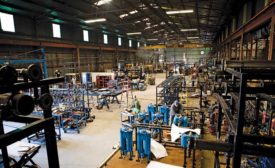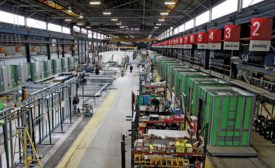Home » Keywords: » productivity
Items Tagged with 'productivity'
ARTICLES
Sponsored Content
Driving Greater Project Returns: How Decision Makers Can Maximize Their Organizations Financial Success
December 13, 2023
ENR 2018 Top 25 Newsmakers
Leo Sveikauskas: Federal Economist Leads Design of a More Reliable Construction Productivity Measure
Read MoreCan Construction 'Par' Standards Raise Productivity?
Golfers Play Against Par, Can Construction Projects do the Same?
Read More
The latest news and information
#1 Source for Construction News, Data, Rankings, Analysis, and Commentary
JOIN ENR UNLIMITEDCopyright ©2024. All Rights Reserved BNP Media.
Design, CMS, Hosting & Web Development :: ePublishing








